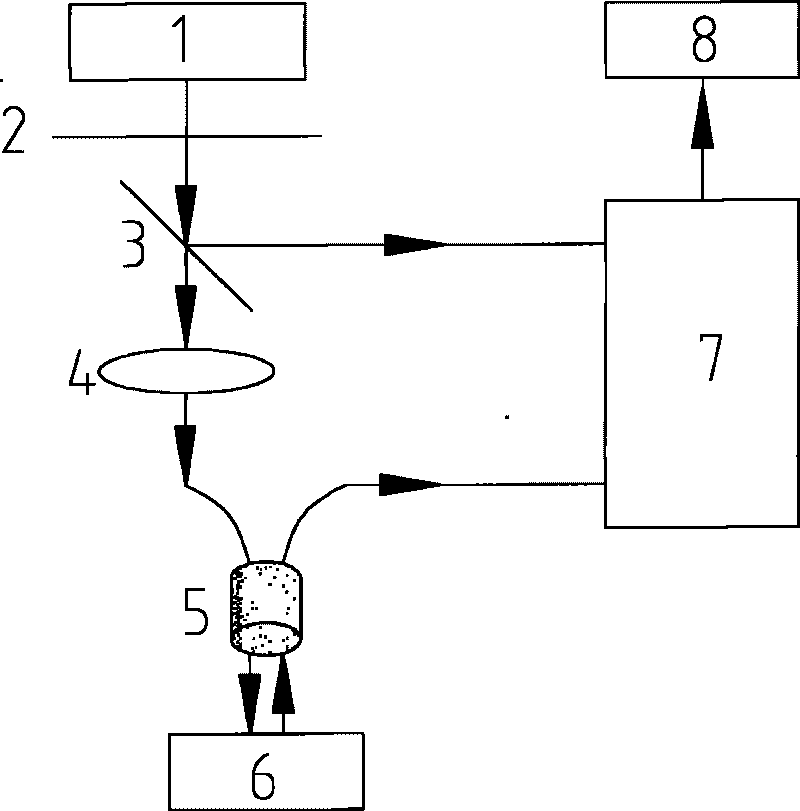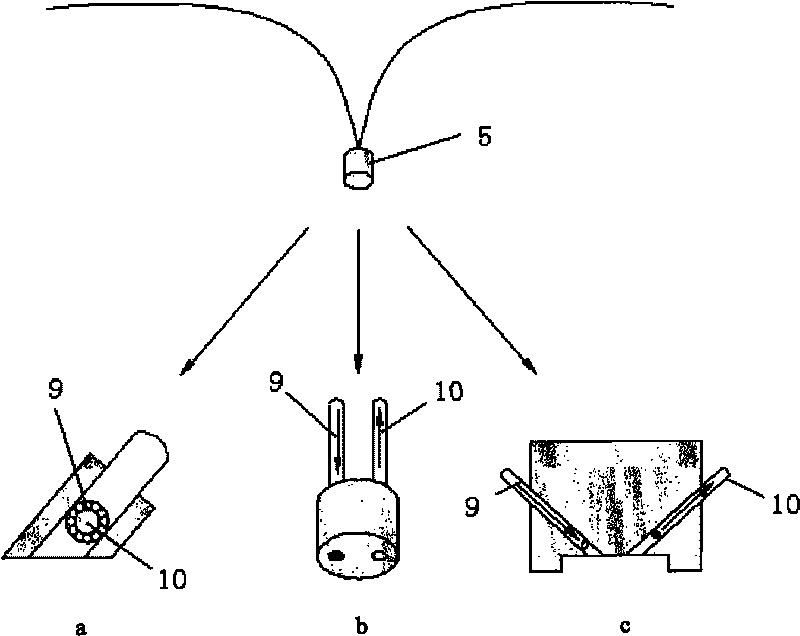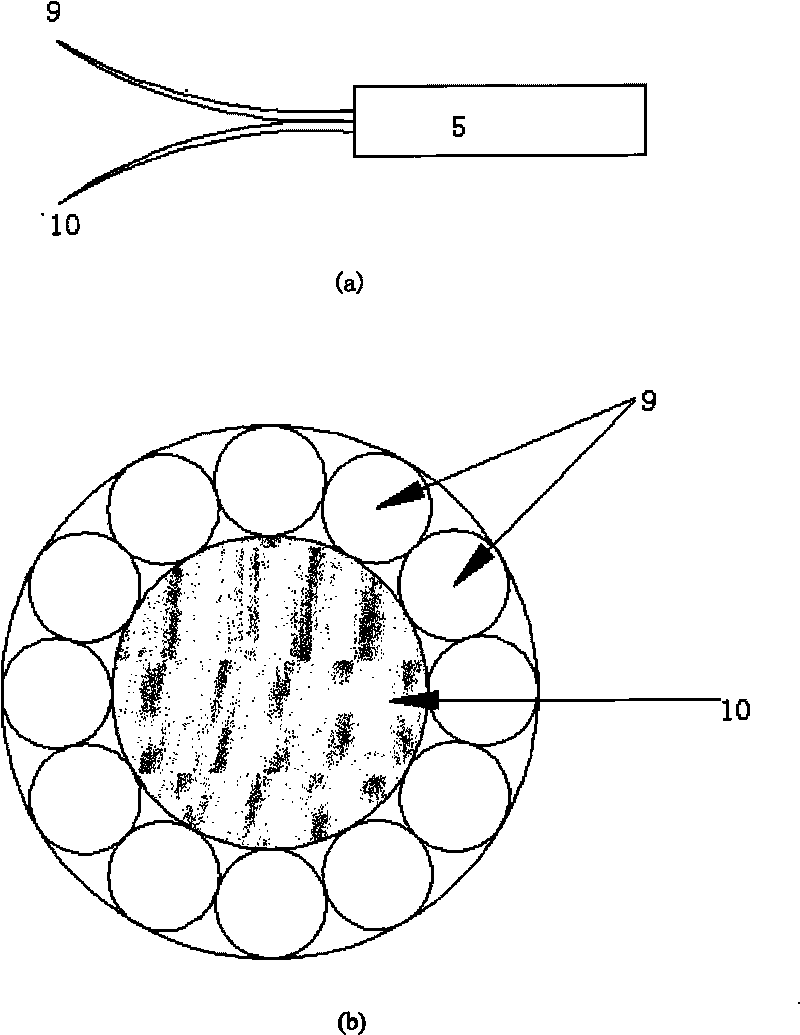Human body oxidative stress non-invasive fluorescence detection device and method
A technology for oxidative stress and fluorescence detection, applied in applications, diagnostic recording/measurement, medical science, etc., can solve problems such as interference, no compensation or correction of fluorescence spectrum, no proposed device for disease diagnosis, etc., to achieve detection speed. The effect of quickness, avoiding pain and the risk of infection
- Summary
- Abstract
- Description
- Claims
- Application Information
AI Technical Summary
Problems solved by technology
Method used
Image
Examples
Embodiment
[0063] The non-invasive fluorescence detection device for human oxidative stress includes an excitation light source system, a spectrum acquisition system and a spectrum signal analysis and processing system.
[0064] Example 1 of such a detection device includes a high-power xenon lamp, a monochromator, and a coupling lens set as the core components of the excitation light source system; including a conducting fiber, a fiber probe, and a spectrometer as a spectrum acquisition system, wherein the fiber probe such as figure 2 As shown in (a), it is a combination of 1 central fiber and 12 edge fibers. The conducting fiber and the fiber probe are connected by the fiber interconnector. The spectrometer is a high-precision spectrometer that can detect spectral signals in the 350nm-600nm band; Analysis system computer and analysis processing software.
[0065] In Example II, the high-power xenon lamp, monochromator, and coupling lens set in Example I were replaced with near-ultravi...
PUM
| Property | Measurement | Unit |
|---|---|---|
| Wavelength | aaaaa | aaaaa |
Abstract
Description
Claims
Application Information
 Login to View More
Login to View More - R&D
- Intellectual Property
- Life Sciences
- Materials
- Tech Scout
- Unparalleled Data Quality
- Higher Quality Content
- 60% Fewer Hallucinations
Browse by: Latest US Patents, China's latest patents, Technical Efficacy Thesaurus, Application Domain, Technology Topic, Popular Technical Reports.
© 2025 PatSnap. All rights reserved.Legal|Privacy policy|Modern Slavery Act Transparency Statement|Sitemap|About US| Contact US: help@patsnap.com



